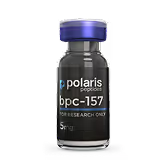Cagrilintide
Cagrilintide is a lab-engineered version of the natural hormone amylin, designed to slow stomach emptying and boost feelings of fullness. When injected once weekly, it helps reduce food intake and supports weight loss by making meals feel more satisfying. It’s being studied for its potential as a non-insulin injectable for managing body weight and metabolism.
Compound Overview
About the product
The molecule is a 32-amino-acid peptide based on native amylin, modified with a C16 fatty-acid side chain (acylation) to bind albumin and prolong its half-life. It includes N-terminal acetylation and C-terminal amidation to resist enzymatic degradation. The peptide is synthesized by Fmoc solid-phase methods and purified by HPLC to exceed 95 % purity. Mass spectrometry confirms its correct sequence and acylation.
Cagrilintide activates amylin receptors in the brainstem, which slows gastric emptying and promotes feelings of fullness (satiety). It also modulates glucagon secretion to support blood-glucose control. The acylated design sustains receptor engagement over a week after a single injection.
The peptide is studied primarily for weight-loss and metabolic-health research. In phase II trials, cagrilintide produced greater mean body-weight reductions than placebo and showed additive effects when combined with semaglutide. Participants also experienced improvements in waist circumference and glycemic markers. Further studies are evaluating its efficacy and safety in larger, longer-term settings.
Common side effects reported in human trials include nausea, vomiting, and mild injection-site reactions. Most gastrointestinal effects are transient and tend to decrease over several weeks of treatment. There are no clinical data on use during pregnancy, lactation, or in pediatric populations. Recommended monitoring focuses on GI tolerance and metabolic parameters.
Cagrilintide is synthesized by Fmoc solid-phase peptide synthesis on a resin support, incorporating the amylin sequence and fatty-acid linker. After chain assembly and acylation, it is cleaved and purified via preparative HPLC to research-grade purity. Mass spectrometry verifies molecular weight and modification integrity. Production follows peptide-compounding standards under GMP conditions.
Cagrilintide is classified for investigational use only and has not received approval from the U.S. FDA, EMA, or other major regulatory bodies. It cannot be prescribed or sold outside clinical trials. Research institutions may obtain it under IND or equivalent frameworks. No commercial formulations are yet available.
Phase II studies have evaluated once-weekly subcutaneous cagrilintide dosage ranging from 0.6 mg to 2.4 mg. Titration schedules begin at lower doses with gradual escalation to improve tolerability. No standardized dosing regimen exists outside research protocols. All administration should follow approved clinical-trial designs.
- Do follow clinical-trial titration schedules to manage GI side effects.
- Do monitor weight, waist circumference, and blood-glucose regularly.
- Don’t combine with other investigational weight-loss agents without oversight.
- Don’t use during pregnancy, lactation, or in patients with severe gastroparesis.
- Q: How does cagrilintide differ from pramlintide?
- A: Cagrilintide is acylated for weekly dosing, whereas pramlintide requires multiple daily injections.
- Q: Can it be used alone?
- A: Trials have tested it both as monotherapy and in combination with GLP-1 agonists.
- Q: When do weight-loss effects appear?
- A: Many participants begin to see reductions within four to six weeks of weekly dosing.
For research use only. Not approved for medical use.


